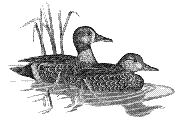US Fish & Wildlife Service
Date of this Version
January 1993
Abstract
Waterfowl that nest in uplands in the prairie pothole region have had low recruitment rates in recent decades, primarily because of predation. The loss of breeding waterfowl and their progeny has generated interest in management techniques that safeguard incubating hens and their eggs. Developing islands and peninsulas for nesting waterfowl has potential because these sites are naturally attractive to breeding ducks and geese. In fact, dense nesting colonies of ducks developed on some islands when successful females and a portion of their female progeny returned in subsequent years.
Managers have successfully duplicated the beneficial attributes of islands by developing various nesting habitats that are protected by water barriers. This chapter addresses the management of existing islands, the creation of new islands, and the modification of peninsulas into islands to increase nesting success in waterfowl.



Comments
Published in Diana H. Cross and Paul Vohs (eds.) Waterfowl Management Handbook. Fort Collins, CO: U.S. Fish and Wildlife Service, 1988. Online at http://www.nwrc.usgs.gov/wdb/pub/wmh/contents.html